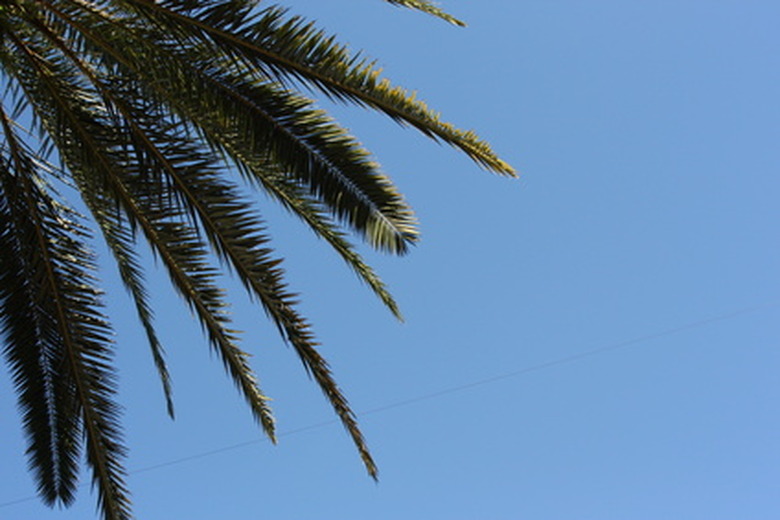How To Care For A King Palm
Bring the tropics home with you by planting and learning how to care for a King Palm (Archontophoenix alexandrae, USDA zones 10-11). King Palms are fast-growing palms that can reach a potential height of 80 feet. Originally native to Australia, the King Palm has a smooth, ringed trunk with dark green palm leaves and also produces a small red decorative fruit. This type of palm makes an elegant addition to your tropical garden. And, in case you live in a colder climate, the King Palm is hardy: It can withstand cold as low as 28 degrees Fahrenheit.
Choose Your Growing Location
Choose where you intend to care for a King Palm: outside or inside. These palms may be grown indoors, where a container will restrict its potential landscape height of 80 feet; however, it's still an imposing houseplant that does best in rooms with high ceilings. You can also get semi-dwarf varieties with shorter branch structures. Note that King Palms prefer partial sunlight, but can be grown in full sunlight.
Prepare Proper Soil
Ensure the King Palm's roots grow in sand as well as soil. To properly care for your King Palm, replicate these settings as best as you can by amending the soil. The bottom of your planting site should have four inches of sand and the rest of the site should have a mixture of sand and soil.
Irrigate King Palms Regularly
Keep the soil moist and water the plant with plenty of water. King Palms require more water than other palms. If your King Palm is planted in a pot, pour enough water into the soil so that some runs out the bottom. Make sure you have something to catch the water such as a bowl or a dish. If your King Palm is outdoors, water enough so that small pools form on the surface of the soil. Water your palm three times a week during summer. Water more during drought conditions.
Apply Fertilizer Four Times Annually
Fertilize your King Palm four times a year, or according to label directions. Use a slow-release palm fertilizer, usually labeled as 12-4-12 or 13-13-13, that comes in the form of pellets buried at least 2 feet from the base of the tree. Palm fertilizers are available at most garden stores.
Clean the Area
Keep the area around your palm clean. Remove weeds regularly. Clean up any dropped fronds or other debris under the tree, which can attract insects and animals that could damage the tree.
Inspect Palm Fronds
Inspect the King Palm fronds at least once a week for damaged fronds or spider mite infection. Remove the damaged fronds from the tree. If spider mites are present, you will notice tiny white spots on your palm's leaves. Consider using a miticide to kill the mites or using an alcohol-water solution with one part alcohol and three parts water. For the most part, care of King Palms is minimal.
Build a Base Support
Provide support at the base of your King Palm's trunk if you notice that the trunk is leaning toward one side. Use boards (such as 2x4s) and a bungee cord to support the tree. Place the boards in the soil around the tree to straighten the palm's growth. Use the bungee cord to secure the boards in place.
Avoid Pruning
Avoid pruning a King Palm as it can't heal itself. The scars left behind from pruning will likely remain, and they can increase the risk of disease and fungus attacking the palm.
